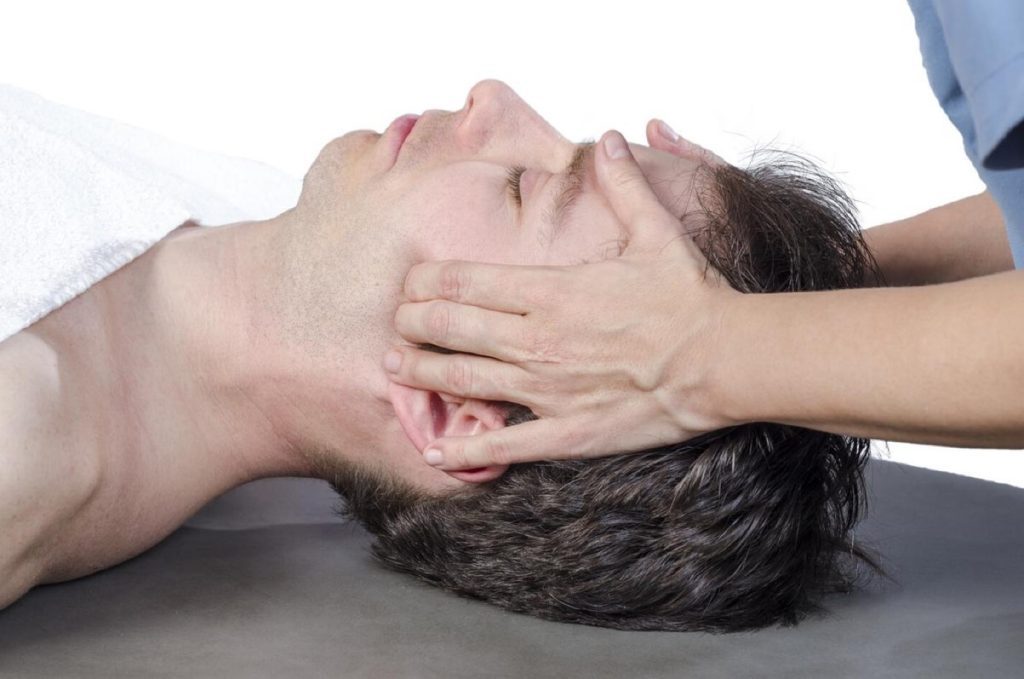Ever felt that dull ache in your jaw, especially when chewing or speaking? You’re not alone. Many people experience jaw issues but remain unaware of the chiropractic treatments available, such as Chiropractic Jaw Adjustment, that can help.
What is Chiropractic Care?
The Philosophy Behind Chiropractic Treatment
Chiropractic care revolves around the belief that the body can heal itself when placed in the right alignment. Isn’t it fascinating how our bodies can essentially reset themselves? By adjusting the body’s structure, mainly the spine, chiropractors help the body work at its best.
Commonly Treated Conditions with Chiropractic Care
Most people relate chiropractic care to back pain. But did you know it can also treat headaches, sciatica, and yes, jaw issues? Let’s delve deeper.
Jaw Popping After Chiropractic Jaw Adjustment:

After receiving a chiropractic Jaw adjustment, it’s not uncommon for patients to experience various reactions as the body responds to the newly restored alignment. One such reaction might be jaw popping or clicking, especially if the adjustment was targeted at the cervical spine or the temporomandibular joint (TMJ). The TMJ is the joint that connects the jawbone to the skull and facilitates functions like chewing and speaking.
Popping or clicking sensations post-adjustment can result from the realignment of the jaw or relief of tension in the surrounding muscles. However, it’s essential to differentiate between occasional popping sounds and consistent, painful clicking. If the latter occurs, it could indicate a more serious underlying issue with the TMJ, necessitating further medical or dental evaluation.
Can a Chiropractor Adjust My Jaw:
Yes, a chiropractor can adjust your jaw, especially if they have expertise or training in treating temporomandibular joint disorders (TMD). The temporomandibular joint, as mentioned, plays a crucial role in functions like chewing and speaking. Just like other joints in the body, the TMJ can become misaligned due to various factors like trauma, teeth grinding, or even prolonged poor posture.
A misaligned TMJ can lead to pain, limited jaw movement, and other symptoms. Chiropractors can utilize techniques to adjust the jaw, helping to alleviate these symptoms and restore proper function. However, it’s essential to see a chiropractor with specific knowledge and experience in this area for the best results.
Can Chiropractors Do Jaw Adjustments:
Absolutely. Chiropractors, particularly those trained in cranial or TMJ therapies, are equipped to perform jaw adjustments. They use gentle manipulation techniques to realign the jaw and reduce any interference or misalignment in the temporomandibular joint. Such adjustments can be beneficial for individuals suffering from TMD or those who have experienced trauma to the face or jaw.
Alongside direct adjustments, chiropractors might also offer exercises, therapies, or advice on lifestyle changes to further support jaw health and alleviate symptoms related to TMJ disorders. Before undergoing any form of jaw adjustment, it’s crucial to consult with a qualified chiropractor to ensure the treatment is appropriate and tailored to your specific needs. Additionally, if you’ve ever wondered about the bodily effects post-adjustment, you might be interested in learning about what toxins are released after a chiropractic adjustment. This information can give you a broader understanding of how chiropractic care impacts your overall health.
Understanding the Jaw: Basic Anatomy
The Temporomandibular Joint (TMJ)
Ever wondered what allows you to open and close your mouth? It’s the TMJ – a hinge connecting your jaw to your skull. Just like any joint, it can face issues.
Common Jaw Disorders and Their Causes
From genetics to injuries and even habits like teeth grinding, there are various culprits behind jaw disorders. Recognizing them is the first step to recovery.
Jaw disorders, particularly those affecting the temporomandibular joint (TMJ), can be uncomfortable and disrupt daily life.
Here’s a look at some common jaw disorders and their causes:
- Temporomandibular Joint Disorders (TMD or TMJD):
- Causes:
- Injury: A direct blow or trauma to the jaw or the side of the head can cause TMD.
- Teeth Grinding (Bruxism): Constant clenching and grinding of the teeth, especially during sleep, can strain the TMJ.
- Arthritis: Osteoarthritis or rheumatoid arthritis in the TMJ can lead to TMD.
- Stress: Often, stress can cause a person to tighten facial and jaw muscles or clench the teeth.
- Disk Erosion or Misalignment: The TMJ has a soft disc that cushions the joint. Erosion or misalignment can cause pain and movement issues.
- Misaligned Bite: Teeth that don’t align properly can lead to TMJ problems.
- Causes:
- Dislocated Jaw:
- Cause:
- Trauma: A direct blow, an accident, or even wide yawning or biting into something large can lead to a dislocated jaw.
- Cause:
- Jaw Fracture:
- Cause:
- Trauma: This is usually the result of a direct impact or blow to the jaw.
- Cause:
- Trigeminal Neuralgia:
- Causes:
- Blood Vessel Pressure: A blood vessel pressing against the trigeminal nerve can cause pain.
- Multiple Sclerosis: The disease can cause nerve damage leading to trigeminal neuralgia.
- Tumors: A tumor or growth in the brain can press against the trigeminal nerve.
- Causes:
- Jaw Bone Infections (Osteomyelitis):
- Cause:
- Bacterial Infection: A bacterial infection that starts in another part of the body can travel through the bloodstream and affect the jawbone.
- Cause:
- Lockjaw (Tetanus):
- Cause:
- Bacterial Infection: Caused by the bacterium Clostridium tetani, it affects the nervous system, leading to muscle stiffness and spasms.
- Cause:
- Bruxism (Teeth Grinding):
- Causes:
- Stress: Often, people may grind their teeth unconsciously when stressed.
- Sleep Disorders: Conditions like sleep apnea can be associated with bruxism.
- Lifestyle Factors: Consuming caffeinated beverages or certain medications can trigger teeth grinding in some individuals.
- Causes:
- Oral Cancer:
- Causes:
- Tobacco Use: Smoking or chewing tobacco increases the risk.
- Heavy Alcohol Consumption: This is another significant risk factor.
- HPV: Some strains of the human papillomavirus have been linked to oral cancers.
- Causes:
Recognizing the causes and symptoms of jaw disorders is essential. Early detection and treatment can prevent complications and alleviate pain or discomfort. If someone suspects they have a jaw disorder, they should seek evaluation from an oral surgeon, dentist, or medical doctor.
Chiropractic Jaw Adjustment: The What and Why

Benefits of Chiropractic Jaw Adjustment
Imagine relief from that nagging jaw pain. Apart from pain relief, adjustments can improve jaw mobility and reduce annoying sounds like clicking or popping.
Here are some potential benefits of chiropractic jaw adjustment:
- Pain Relief: One of the primary benefits of a chiropractic adjustment of the jaw is relief from pain. TMJ disorders can result in pain in the jaw, face, ear, neck, and even shoulders. Adjusting the joint can alleviate this discomfort.
- Improved Jaw Mobility: Restricted movement in the jaw can make everyday tasks like talking, yawning, or eating difficult. By realigning the jaw, chiropractic care can improve its range of motion.
- Reduced Clicking and Popping: Many individuals with TMJD experience clicking or popping sounds when they open or close their mouth. While these sounds themselves aren’t necessarily harmful, they can be annoying or indicative of a more significant issue. Adjustments can help reduce or eliminate these sounds.
- Headache and Migraine Reduction: Misalignment of the TMJ can lead to tension headaches or even migraines. By adjusting the joint, there’s potential for a reduction in the frequency or intensity of these headaches.
- Improved Posture: Misalignment in the TMJ can impact the neck and spine’s posture. When the jaw is realigned, it can contribute to an improved overall posture.
- Reduced Ear Symptoms: TMD can sometimes manifest as ear pain, tinnitus (ringing in the ears), or even a feeling of fullness or pressure in the ears. By addressing TMJ misalignment, some of these symptoms might be alleviated.
- Decreased Tooth Wear: An imbalanced bite due to TMJ issues can result in uneven tooth wear. By restoring proper alignment, there’s a potential for reduced risk of dental problems.
- Natural and Non-Invasive: Chiropractic adjustments offer a non-surgical and drug-free approach to treating TMJD. This can be especially appealing to those who prefer or need to avoid surgery and medication.
- Improved Sleep: Jaw pain and discomfort can disrupt sleep. By alleviating these symptoms, patients might experience better sleep quality.
- Enhanced Overall Well-being: When pain and other symptoms associated with TMJD are reduced or eliminated, it can result in an improved quality of life.
While many have found relief with chiropractic jaw adjustments, it’s essential to note that results can vary from person to person. It’s crucial to work with a qualified chiropractor familiar with TMJ disorders. Moreover, if someone suspects they have TMJD, they should consult with both a chiropractor and a dentist or oral surgeon to ensure a comprehensive approach to treatment.
Before and After: What to Expect
Preparing for the Adjustment
- Consultation: Before any adjustment, a chiropractor will typically have a consultation with the patient. This is to understand the patient’s medical history, symptoms, and any potential underlying issues.
- No Need to Fast: There’s no requirement to fast before a chiropractic adjustment. However, it’s a good idea to avoid a heavy meal immediately before the session to feel comfortable during the procedure.
- Jaw Exercises: Some chiropractors may recommend specific jaw exercises before your appointment to help relax the muscles around the TMJ. However, it’s essential to follow the chiropractor’s instructions and not to overdo it.
- Relaxation: Before your appointment, try to relax. Stress can cause muscle tension, which might make the adjustment more challenging.
Immediate Results and Long-Term Benefits
- Immediate Relief: Some patients experience immediate relief after a chiropractic jaw adjustment. The intensity and duration of the pain, as well as the specific cause, can influence how quickly one feels relief.
- Multiple Sessions: In many cases, multiple sessions are required for lasting benefits, especially if the misalignment has been present for an extended period.
- Improved Mobility: Over time, patients can notice improved jaw mobility, reduced clicking or popping sounds, and relief from pain or tension in the surrounding muscles.
- Prevention: Regular adjustments can prevent the recurrence of TMJ issues and can also help in avoiding related problems, like headaches or neck pain.
Risks and Considerations
- Potential Side Effects: After a chiropractic adjustment, some people might experience temporary soreness in the jaw or surrounding area, similar to the feeling after a workout. This is typically mild and short-lived.
- Not Suitable for Everyone: People with certain conditions, like severe osteoporosis, inflammatory arthritis, or those who have had recent surgical procedures on the jaw, might not be suitable candidates for chiropractic jaw adjustments.
When to Seek Chiropractic Care for Your Jaw
- Chronic Discomfort: If you’re experiencing ongoing discomfort or pain in the jaw, it’s an indication that you should seek help.
- Clicking or Popping Sounds: While these sounds aren’t always indicative of a severe issue, if they’re accompanied by pain or reduced jaw mobility, it’s worth consulting a professional.
- Locking of the Jaw: If your jaw occasionally locks or gets stuck, either in the open or closed position, it’s a sign that you should seek treatment.
- Other Symptoms: Symptoms like headaches, ear pain, difficulty chewing, or even dizziness can be related to TMJ disorders and warrant a visit to a chiropractor.
Comparing Chiropractic Jaw Adjustments with Other Treatments
When dealing with jaw disorders, especially those affecting the temporomandibular joint (TMJ), various treatments can be considered. Two of these treatments are dental splints and chiropractic jaw adjustments. Each has its merits and potential drawbacks, so let’s explore them.
Dental Splints vs. Chiropractic Jaw Adjustments
- Dental Splints (Occlusal or Bite Splints)
- How It Works: Dental splints are custom-made plastic guards that fit over the upper or lower teeth. They work by alleviating pressure on the TMJ and preventing the upper and lower teeth from coming into direct contact, thus reducing teeth grinding (bruxism) and clenching.
- Merits:
- Effective in reducing symptoms of TMD, such as pain and discomfort.
- Can prevent tooth wear from bruxism.
- Non-invasive.
- Drawbacks:
- May need to be worn regularly, which some users might find inconvenient.
- Can be expensive, depending on the type and customization.
- Might not address the root cause if it’s related to jaw alignment or other structural issues.
- Chiropractic Jaw Adjustments
- How It Works: This involves manipulating the jaw joint to alleviate pain and improve function. Adjustments aim to correct misalignments and promote optimal function of the TMJ.
- Merits:
- Can address structural and alignment issues of the jaw.
- Non-invasive and drug-free.
- Might provide immediate relief for some patients.
- Drawbacks:
- Requires multiple visits for best results.
- Not all chiropractors specialize in TMJ disorders, so it’s crucial to find someone experienced.
- While many find relief, results can vary from person to person.
Medications and Their Side Effects
When dealing with TMJ pain or related conditions, some medications might be prescribed or recommended:
- Pain Relievers and Anti-inflammatories: Such as ibuprofen, can help reduce pain and inflammation.
- Muscle Relaxants: These can help with muscle spasms around the jaw.
- Tricyclic Antidepressants: Like amitriptyline, are sometimes used for pain relief.
Side Effects:
- Dependence or addiction, especially with prolonged use.
- Gastrointestinal issues, such as ulcers or bleeding with NSAIDs.
- Drowsiness, especially with muscle relaxants.
- Dry mouth, blurred vision, heart issues, or urinary retention with tricyclic antidepressants.
- Long-term use can affect liver or kidney functions.
Final Thoughts Chiropractic Jaw Adjustment
Chiropractic jaw adjustment offers a holistic approach to jaw issues. By understanding the root cause and addressing it, one can experience long-term relief and improved quality of life. Remember, your body is capable of healing; sometimes, it just needs a little guidance.
FAQs About
Q: Your jaw can a chiropractor realign?
A: Your doctor may perform one of several distinct sorts of chiropractic adjustments, depending on the kind of misalignment you have: Deep tissue massage performed manually on the jaw muscles. TMJ activator adjustment with a portable, spring-loaded tool. Neck adjustment done manually.
Q: How can my jaw be adjusted at home?
Exercising flexibility
A: As wide as you can bearably enlarge your mouth, hold that position for 5–10 seconds. Put your tongue’s tip on the inside of your mouth. Slide your lower jaw as far out as it will allow you to and then as far back in. Hold each position for 5–10 seconds.
Q: Can my jaw be changed naturally?
A: Sharper cheekbones and a more defined jawline can result from regular neck, chin, and jaw exercises, as well as other facial muscles. According to one study, 20 weeks of consistent facial training resulted in larger cheeks and a more youthful appearance.
Q: Will my jaw ever return to normal?
A: Jaw dislocation occurs when the mandible, which is the lower jaw, moves from its natural position. Though it normally heals without any issues, it might do so in the future. Seek medical attention right away if your jaw becomes dislocated, and never attempt to fix a dislocation yourself.
Q: How long does a chiropractic jaw adjustment session last?
A: Typically, sessions last between 30 minutes to an hour.
Q: Can I return to my daily activities after the adjustment?
A: Yes, most patients can resume their daily tasks, but it’s best to avoid strenuous jaw activities immediately after.
Q: How many sessions will I need?
A: The number of sessions varies from person to person, depending on the severity of their condition.
Q: Are there age restrictions for chiropractic jaw adjustments?
A: Chiropractic care is suitable for all ages, but it’s essential to consult with a chiropractor to ensure the procedure is right for you.
Q: Can I combine chiropractic care with other jaw treatments?
A: In many cases, yes. However, always discuss with your healthcare providers before combining treatments.
About Author
Dr. Joe Naijla, a licensed chiropractor dedicated to serving the Jacksonville community, has been enhancing the health of Jacksonville residents for over 15 years. With a wealth of experience, Dr. Naijla is committed to not only diagnosing conditions accurately but also to promoting the optimal health and well-being of his patients.



